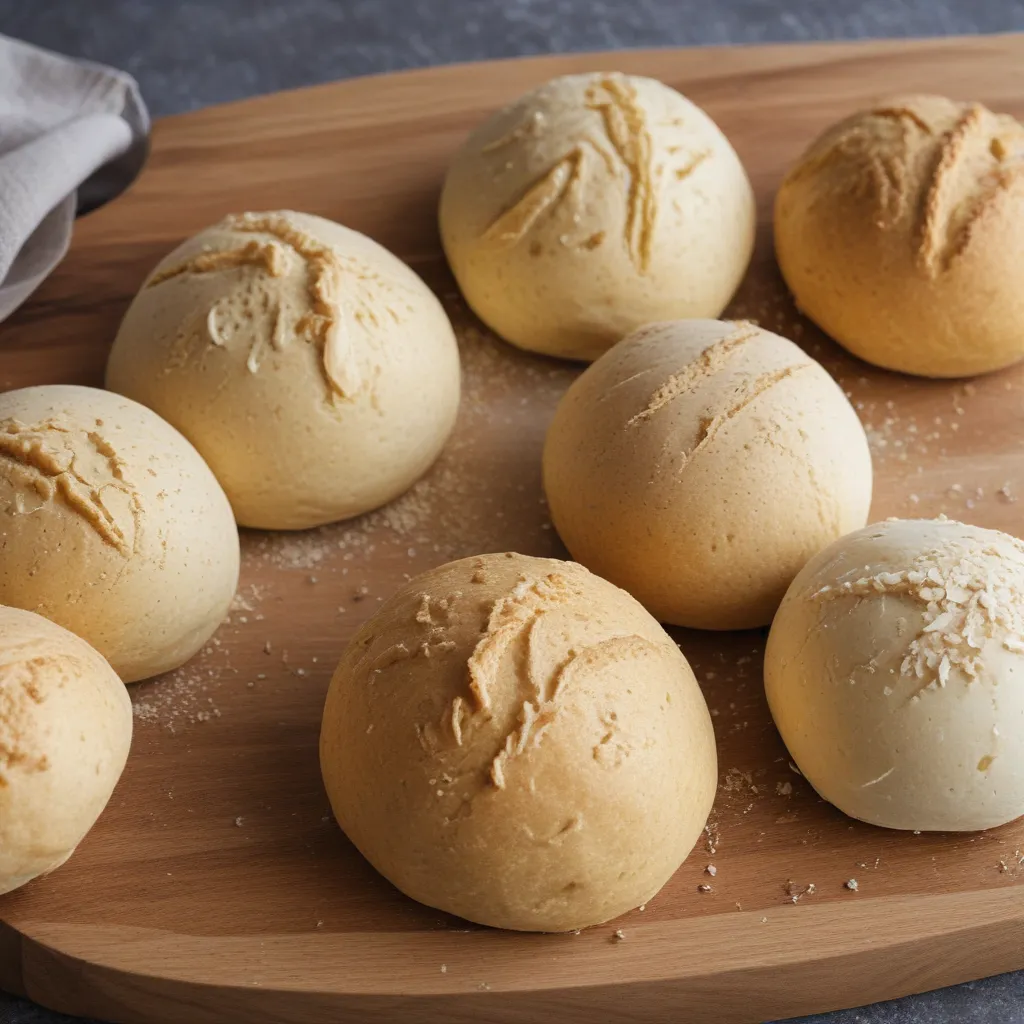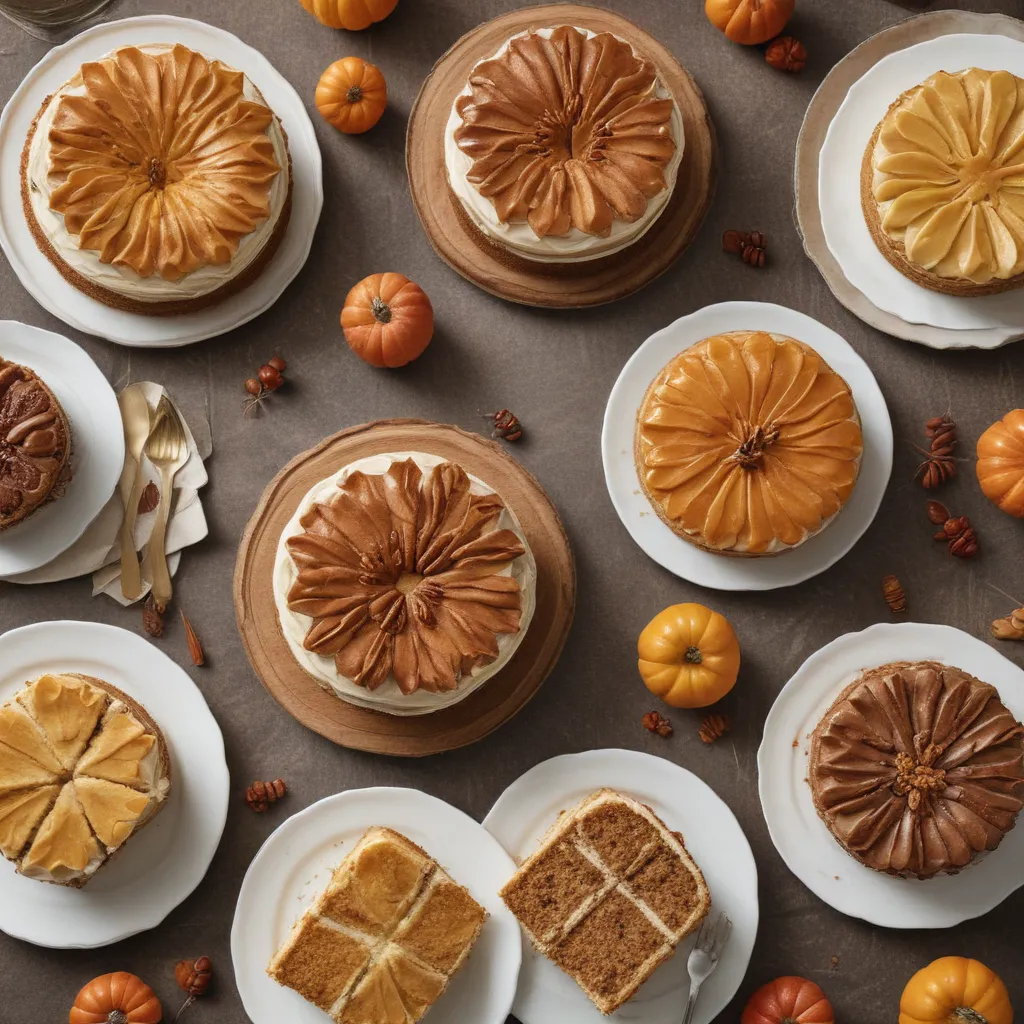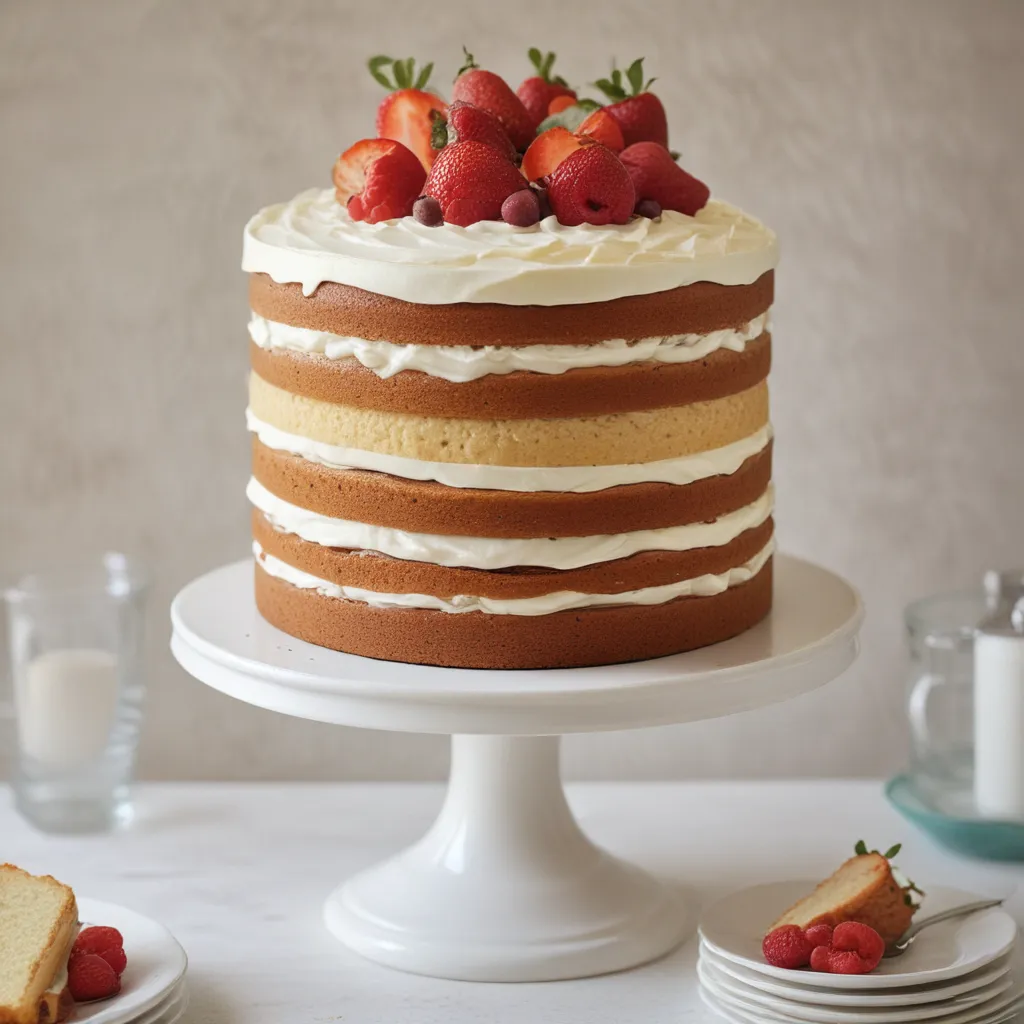
Ah, the wonderful world of baking – where the perfect balance of flour, liquid, and leavening can transform a humble collection of ingredients into a masterpiece worthy of any discerning palate. As the proud owner of Jax Cake Shop in the vibrant heart of San Jose, I’ve had the privilege of exploring the intricacies of batter and dough-making, and I’m thrilled to share my insights with you.
Understanding the Fundamentals: Flour, Liquid, and Leavening
Let’s start at the very beginning, shall we? The foundation of any great baked good lies in the careful selection and combination of three key elements: flour, liquid, and leavening. Think of them as the holy trinity of baking, each playing a vital role in the final outcome.
The flour, often the most abundant ingredient in a recipe, is what provides the structure and substance. From delicate pastry flour to hearty whole wheat, each type has its own unique properties that can dramatically impact the texture and flavor of your creation. It’s crucial to understand the nuances of different flours and how they interact with the other components.
Next, the liquid – be it water, milk, buttermilk, or even fruit juices – serves as the binder, bringing everything together into a cohesive, pliable mass. The amount and type of liquid you choose can make all the difference in the world, determining the final consistency of your batter or dough.
And then, there’s the leavening agent – the magical ingredient that infuses your baked goods with airy lightness. Whether it’s the trusty baking soda, the versatile baking powder, or the enigmatic yeast, these tiny powerhouses are responsible for creating the rise and lift that we all crave.
Mastering the Art of Mixing: Technique and Timing
Now that we’ve covered the fundamentals, let’s dive into the art of mixing. This is where the true magic happens, where your deft hands and keen senses come into play.
The secret to successful baking lies in the dance between your ingredients and the way you handle them. It’s a delicate balance, like a well-choreographed ballet, where each step must be executed with precision and grace.
As you begin to blend your flour, liquid, and leavening, pay close attention to the texture and consistency of your mixture. Is it clumping together too quickly? Is it stubbornly refusing to come together at all? The answers to these questions will guide your next moves, whether it’s adding a touch more liquid or gently kneading the dough to achieve the perfect consistency.
And timing – oh, the importance of timing! The moment you introduce your leavening agent can make all the difference in the world. Too soon, and you risk deflating the delicate structure you’ve worked so hard to build. Too late, and your baked goods may end up as dense, lifeless lumps. It’s a delicate dance, but one that becomes second nature with practice and experience.
Exploring the Versatility of Batters and Doughs
Now that we’ve covered the foundations, let’s dive into the endless possibilities that await us in the world of batters and doughs. From the silky smoothness of a classic pound cake batter to the satisfying chewiness of a well-kneaded bread dough, the combinations are truly endless.
Think of batters and doughs as the blank canvases of the baking world – the starting point from which you can create an infinite array of masterpieces.
Take, for instance, the humble muffin batter. By simply adjusting the ratios of flour, sugar, and liquid, you can transform a basic recipe into a veritable flavor explosion. Blueberry, chocolate chip, lemon poppy seed – the options are limited only by your imagination (and, of course, the contents of your pantry).
And what about the humble pie crust? Often considered the bane of many a home baker, this humble dough can be tamed with a little understanding and a lot of patience. Whether you prefer a flaky, buttery crust or a heartier, whole-wheat version, the key lies in striking the perfect balance between fat, flour, and liquid.
Embracing the Unexpected: Nontraditional Batters and Doughs
But why stop at the tried-and-true classics? Some of the most exciting developments in the world of baking come from those who dare to push the boundaries, to explore the uncharted territories of batter and dough-making.
Creativity and curiosity are the driving forces behind the most innovative baked goods. By stepping outside the comfort zone, we open ourselves up to a world of delicious possibilities.
Take, for instance, the growing trend of using alternative flours in baking. From the earthy richness of almond flour to the nutty goodness of buckwheat, these nontraditional ingredients can lend unique textures and flavors to your creations. And let’s not forget the wonders of gluten-free baking, where clever substitutions and techniques have transformed the once-limiting dietary restriction into a culinary playground.
And what about the endless possibilities of flavor combinations? Who says a chocolate chip cookie has to be, well, a chocolate chip cookie? By incorporating unexpected ingredients like chili peppers, lavender, or even whiskey, you can elevate a familiar favorite into a truly one-of-a-kind masterpiece.
Embracing the Science: Understanding the Transformative Powers of Baking
At the heart of it all, baking is a science – a delicate dance between the physical and chemical properties of our ingredients. Understanding these principles is the key to unlocking the full potential of your batters and doughs.
Think of baking as a form of alchemy, where the right combination of elements can transform the ordinary into the extraordinary.
Take, for example, the role of gluten in bread doughs. This miraculous protein is responsible for the satisfying chew and structure of a well-baked loaf. By kneading the dough, you’re actively developing the gluten strands, creating a network that traps the gases produced by the yeast and allows the dough to rise to new heights.
And what about the magic of egg proteins? These versatile little powerhouses can do it all – from acting as a binding agent in cakes to providing lift and structure in meringues. Understanding how to properly whip, fold, and incorporate eggs is the key to achieving that perfect, pillowy texture.
Embracing the Unexpected: Nontraditional Batters and Doughs
But why stop at the tried-and-true classics? Some of the most exciting developments in the world of baking come from those who dare to push the boundaries, to explore the uncharted territories of batter and dough-making.
Creativity and curiosity are the driving forces behind the most innovative baked goods. By stepping outside the comfort zone, we open ourselves up to a world of delicious possibilities.
Take, for instance, the growing trend of using alternative flours in baking. From the earthy richness of almond flour to the nutty goodness of buckwheat, these nontraditional ingredients can lend unique textures and flavors to your creations. And let’s not forget the wonders of gluten-free baking, where clever substitutions and techniques have transformed the once-limiting dietary restriction into a culinary playground.
And what about the endless possibilities of flavor combinations? Who says a chocolate chip cookie has to be, well, a chocolate chip cookie? By incorporating unexpected ingredients like chili peppers, lavender, or even whiskey, you can elevate a familiar favorite into a truly one-of-a-kind masterpiece.
Embracing the Science: Understanding the Transformative Powers of Baking
At the heart of it all, baking is a science – a delicate dance between the physical and chemical properties of our ingredients. Understanding these principles is the key to unlocking the full potential of your batters and doughs.
Think of baking as a form of alchemy, where the right combination of elements can transform the ordinary into the extraordinary.
Take, for example, the role of gluten in bread doughs. This miraculous protein is responsible for the satisfying chew and structure of a well-baked loaf. By kneading the dough, you’re actively developing the gluten strands, creating a network that traps the gases produced by the yeast and allows the dough to rise to new heights.
And what about the magic of egg proteins? These versatile little powerhouses can do it all – from acting as a binding agent in cakes to providing lift and structure in meringues. Understanding how to properly whip, fold, and incorporate eggs is the key to achieving that perfect, pillowy texture.
Putting It All Together: Crafting Baked Goods with Confidence
Now that we’ve delved into the intricacies of batters and doughs, it’s time to put all of our newfound knowledge into practice. Because at the end of the day, baking is a hands-on, experiential art form – one that requires a willingness to experiment, to embrace failures, and to learn from our mistakes.
Baking is a journey, not a destination. The more you immerse yourself in the process, the more you’ll discover about the limitless potential of your ingredients and your own culinary prowess.
So, don’t be afraid to get your hands dirty. Dive in, experiment, and let your creativity flow. Whether you’re perfecting the ultimate chocolate cake batter or dreaming up a new and innovative bread dough, the journey is half the fun. And who knows – you might just end up creating the next big thing in the world of baking.
As for me, I’ll be right here at Jax Cake Shop in the heart of San Jose, always eager to share my passion for baking and to learn from the creativity and ingenuity of my fellow bakers. After all, there’s nothing quite like the thrill of seeing a beautifully crafted cake or pastry bring a smile to someone’s face. It’s the true magic of baking, and it’s a journey I’m honored to be a part of.





